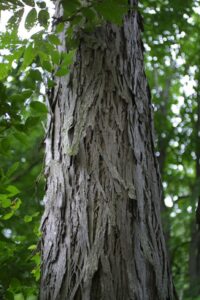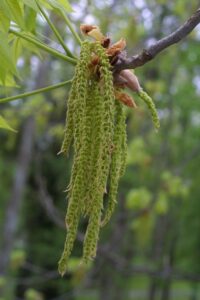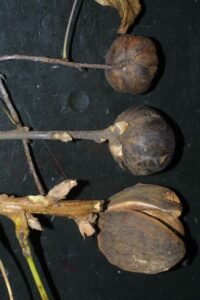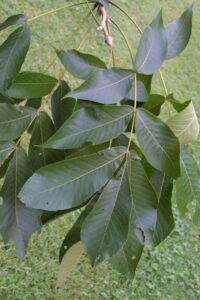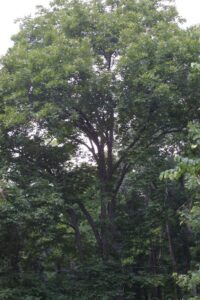Botanical Name:
Carya laciniosa
Family Name:
Juglandaceae / walnut
Description:
The shellbark hickory is a large tree with a straight trunk, narrow rounded crown, and large leaves. The shellbark hickory (also commonly called king nut hickory), produces the largest nuts of all the hickory species.
Size:
60 – 80′
Habitat and Range:
Shellbark hickory is native across Eastern and central North America. This species is generally found growing in moist or wet soils of flood plains and valleys.
Attributes:
The shellbark hickory is a relatively uncommon species, distinguished from other hickories by the large leaves, large nuts, and orange twigs. The tree has distinctive shaggy bark, with bright green foliage which turns yellow to golden brown in the fall.
Wildlife Value:
The large, high-fat nuts produced by the shellbark hickory attract a wide variety of wildlife, including squirrels and other mammals. Large, mature trees also provide excellent nesting habitat for a range of birds.
Did you Know?
• The wood of the shellbark hickory is close-grained, strong, and flexible; it is used in making tool handles and furniture.
• Shellbark hickory trees can be tapped in spring, and the sap boiled down to a syrup or sugar, similar to maple syrup.
Benefits to Our Community (based on carbon dioxide sequestered, storm water runoff avoided, and air pollution removed each year):
Over the next 15 years, this tree will give back $30 worth of benefits to our community.
